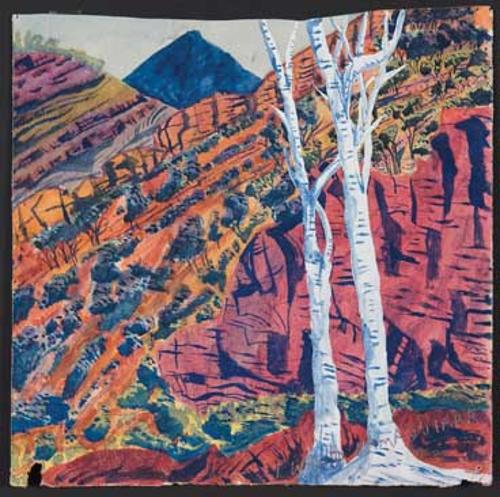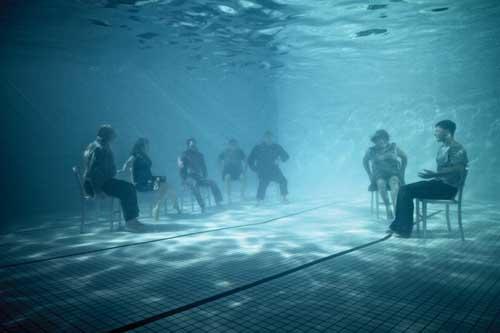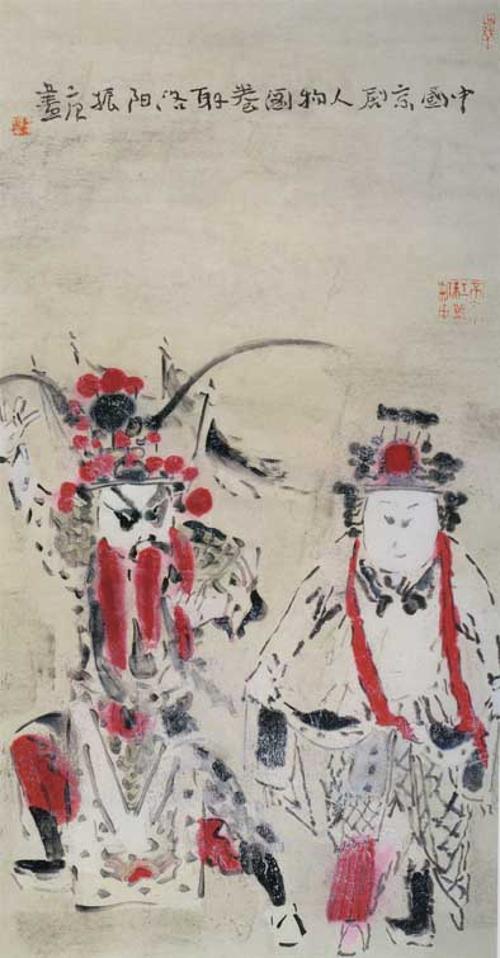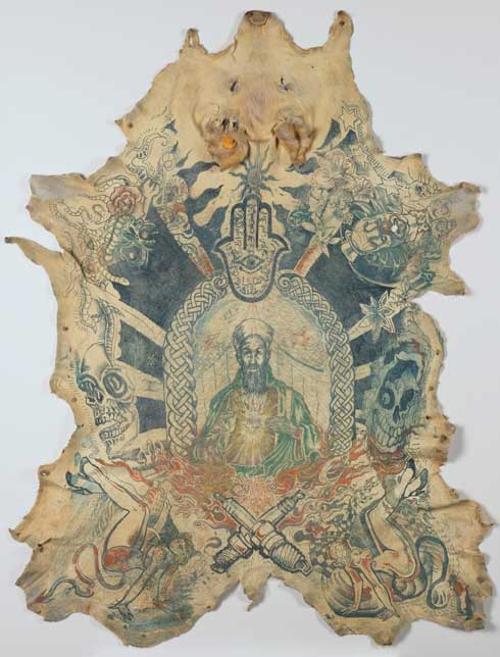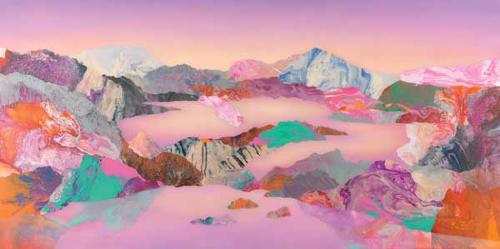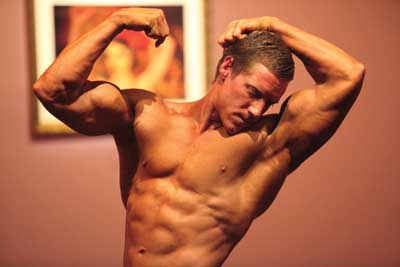
Transformation is a word used frequently in visual art, as if people and places exist only to be remade anew. The hyperbole of transformation suggests an impossibly phoenix-like rebirth in which no traces of the original remain, something miraculously total. However, when the Perth Institute of Contemporary Arts was recently 'transformed' into a sports arena for Tarryn Gill and Pilar Mata Dupont’s Stadium, it was the slippages in transformative ideologies and the all-too visible residues of coercive language that resonated beyond the spin.
Semantic picking at press releases may seem pointless but it’s exactly that hyperbolic varnish that’s examined in Gill and Mata Dupont’s work. Partially retrospective, Stadium brought together key pieces from the artists’ past and an outstanding new performance piece, Ever Higher, which continued their exploration into the collusion of sport and military iconographies and which was performed in public for the first time on opening night.
Ever Higher was certainly a spectacular experience. An aerialist undertook daring manoeuvres on a rope descending from the vertiginous ceiling, shouting militaristic slogans that were echoed by a troupe of cheerleaders performing below. Performed in custom-made pink and navy uniforms and with hair and make-up styled to vintage perfection, disciplined movement, violent call and response cheers were wittily counterbalanced with absurd pageant smiles.
Ever Higher was viewed from an enormous block of tiered arena seating, sweetly adorned with celebratory bunting. In the lengthy periods between performances, the seating block also provided a point from which to view a selection of Gill and Mata Dupont’s short films. PICA’s cavernous main gallery space is often difficult to command but the seating block provided both an effective sculptural prompt and a practical spatial solution, creating an aptly theatrical entrance to the exhibition and allowing the works to be viewed at the cinematic scale and with the concentration they deserve. These films, including the recent Basil Sellers prizewinner Gymnasium, showcased an aspect of Gill and Mata Dupont’s oeuvre that can be missed in their photographs, a finely tuned sense of irony and comic timing.
This is most evident in Heart of Gold Project 2 and 4, in which girl soldiers and outlaws enact pantomimes of familiar histories. While the endearing glamour of these works sugar-coats more insidious national narratives, Gymnasium’s deliberate similarity to the National Socialist films of Leni Riefenstahl means that its moral message is unmistakeable. It’s in this work that the rhetoric of transformation - the physical and symbolic transformation of the body used for ideological persuasion – exposes its most sinister underbelly. Gymnasium’s blatant association of Australian imagery with an obsessive, totalitarian physical perfection calls into question the priorities of a nation uncomfortable with its own exclusionary history.
The three smaller, anterior galleries reinforce these themes with a survey of Gill and Dupont’s photographs that compare athletic and military imagery. The campaign begins in Gallery 1 with the glittering nationalism of Heart of Gold Project 5: The All Australian Surf Lifesaver Series, in which sequined female lifeguards pose in heroic tableaux. Costumes change in Gallery 2 for a series of satirically photographs reminiscent of 1950s war propaganda. The all-female cast of war heroes echo the lifeguards’ mannered, brave gazes, recalling the ecstasy of Baroque martyrdom. The final, darkened space concluded the operation with a juxtaposition of the artists dressed as national leaders from their heritage with gaudy, emotive portraits from the Lament of the Argentine Military suite. The two sets of photographs face off over a hardwood and leather desk suitable for secret parliamentary business; it’s a room in which the weight of history on the individual is palpable.
This final pairing returned the artists to centre stage; Gill and Mata Dupont are often subjects as well as producers and it’s their personal relationship with their subjects that makes their work so successful. A complex affection allows the artists to celebrate as well as critique. While comparisons between the drama of sport and the theatre of war, between the tribal nature of teams and nations are by no means new or revelatory, Stadium’s clever and seductive arrangements re-invest its themes with an accessible, contemporary relevance. The process by which Gill and Dupont entice the viewer into their constructed world echoes those that occur daily in popular media, however the theatricality of the artists’ gestures reveals the mechanisms by which hearts and minds are won. The transformation is imperfect, but herein lies its power.


